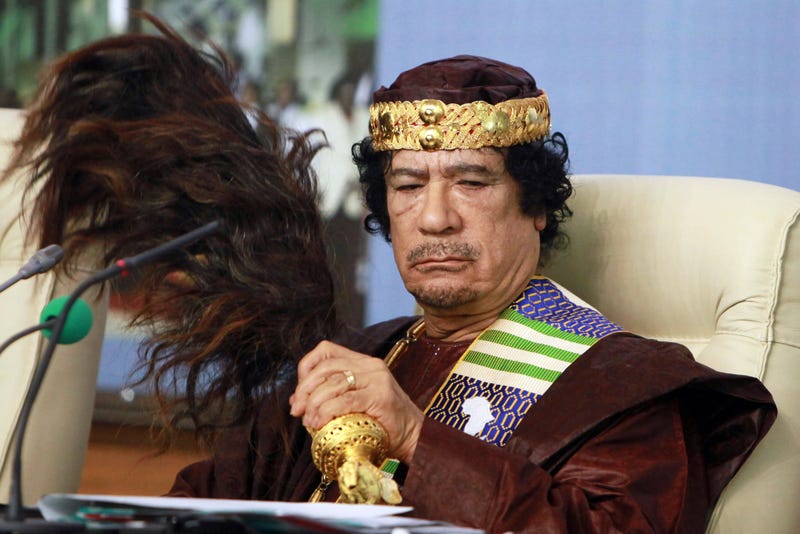
JOHANNESBURG (AP) — Many supposedly invincible leaders have been forced to flee their countries to avoid incarceration, execution, or political retaliation by successor governments due to revolutions, military coups or mass protests.
The most recent international leader to join the list is Andry Rajoelina, the president of Madagascar, who was overthrown in a military coup this week. His fall came after weeks of Gen Z demonstrations over hardship, lack of opportunities and power shortages in the Indian Ocean island nation.
Here's a look at other leaders who have succumbed to a similar fate.
Marc Ravalomanana
Marc Ravalomanana served as Madagascar’s sixth president from 2002 to 2009 until he was overthrown by a military coup led by none other than Rajoelina, who was at the time the former mayor of Antananarivo, the capital. Ravalomanana transferred his power to a military council and fled to South Africa. The international community deemed it a coup and withdrew all but humanitarian aid.
Ravalomanana was later convicted in absentia of conspiracy to commit murder in a case related to the violence during his overthrow. He was sentenced to life in prison after a trial described as “unfair” by Amnesty International.
After more than five years of exile, he return to Madagascar and was arrested at his home. The following year his sentence was lifted and he was freed from house arrest.
Bashar Assad
In 2024, former Syrian leader Bashar Assad fled to Russia as rebels advanced toward the capital Damascus to take over power after years of civil war.
As opposition forces swept across the country, Assad arrived in Moscow, bringing an end to 51 years of his family’s rule over the country.
For years, Assad enjoyed backing from allies Russia and Iran, who supported him throughout a 13-year civil war against opposition forces.
Russian President Vladimir Putin granted protection to him, his family and some associates, and has refused to extradited him to Syria.
Viktor Yanukovych
In February 2014, following a series of deadly protests, Ukrainian President Viktor Yanukovych fled the capital city of Kyiv and eventually reemerged in Russia.
The protests in Kyiv were sparked by Yanukovych’s shelving of an agreement with the European Union in November and turning instead for a $15 billion bailout loan from Russia. Yanukovych and opposition leaders would strike a deal aimed at bringing Ukraine’s political crisis to an end but he secretly fled the capital that evening.
Ukrainian MPs voted to impeach him and hold early presidential elections while an arrest warrant was issued for him following the protests which led to the deaths of dozens of civilians. Putin and Yanukovych would later state that Russian forces helped Yanukovych fly to Russia via Crimea.
Jean-Bertrand Aristide
Former Haiti President Jean-Bertrand Aristide twice fled his country during military coups, the first one six months after he became the Caribbean island’s first democratically elected leader in 1991.
His reforms angered the military elite, and he fled to Venezuela when his government fell. He was reinstated to finish his term from 1994 to 1996 with help from the United States.
Aristide won election again in 2000 but by 2004 the country was in turmoil and he was forced to resign, with his administration facing popular rebellion.
Aristide fled for the second time, leaving Haiti in a U.S.-chartered plane to the Central African Republic and later settling in South Africa. He returned to Haiti in 2011.
Moammar Gadhafi
Libyan leader Moammar Gadhafi lost his four-decade grip on power during the 2011 Libyan Civil War, which was part of the wider Arab Spring uprisings.
Rebel forces overthrew Gadhafi after capturing the capital city of Tripoli forcing him to flee with a handful of loyalists. He hid for weeks amid a bloody siege by rebel forces in his hometown of Sirte, one of the last strongholds of loyalist resistance.
Gadhafi tried to flee the besieged city on Oct. 20, 2011, with a convoy of loyalist fighters, but they were dispersed after being struck by a NATO air attack. Opposition forces then located Gadhafi in a big drainage pipe and captured him.
Following his death, his body was on public display for a few days before being buried in a secluded desert site.